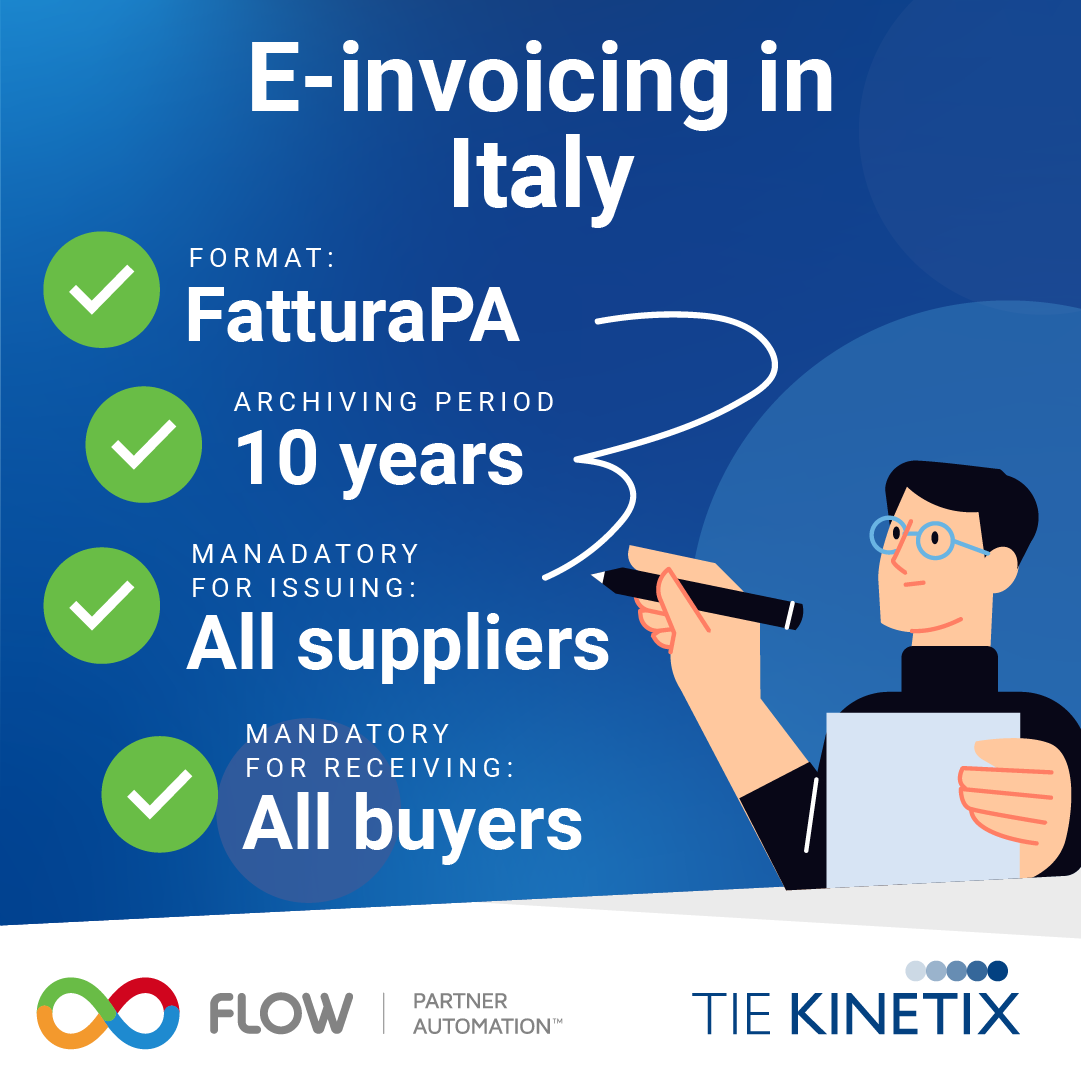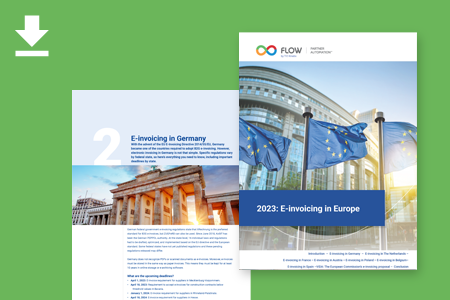Known for its art, culture and history, Italy has focused on e-invoicing as a crucial economic reform. Its transition to invoices digitalization, as well as the introduction of the clearance model in 2019, managed to tackle complex tax structures, reduce tax evasion, and demonstrate fiscal responsibility and modernization. Following this example, more and more EU member states began to consider similar transformations for themselves.
As e-invoicing becomes mandatory due to ViDA (VAT in the Digital Age) legislation and the B2B e-invoicing mandate, it's crucial to act strategically and get a bird's eye view of the system itself. Together, let's dive into a comprehensive analysis of Italy's transition from its traditional fiscal practices to today's e-invoicing systems.
E-Invoicing: Italy’s Shield Against Tax Fraud
Before 2014, Italy grappled with numerous challenges in its tax system and the larger economic landscape. This was the reality for the local government and entrepreneurs:
- The Alarming VAT Gap: The significant difference between the expected VAT revenue and the actual amount collected was concerning. This gap primarily stemmed from tax evasion, fraud, and various non-compliance behaviors.
- A Tangled Tax Web: Italy's tax system was daunting for businesses, frequently resulting in unintentional mistakes and inefficiencies. This convoluted system often deterred compliance and raised operational costs.
- Persistent Tax Evasion: Certain sectors of Italy's economy have been historically prone to tax evasion. Thus, ineffective monitoring mechanisms aggravated this issue.
As the European Union had required member states to plan for an adequate regulatory, organizational, and technological framework to manage the entire purchasing cycle electronically, Italians eagerly seized the opportunity.
Italy's Modern Renaissance
Italy pioneered coffee, banking, and quite recently, e-invoicing. Within the last one, it has seen a significant positive shift. Since the introduction of the Decree of 3 April 2013, the VAT Gap in Italy started declining: from 26.9% in 2015, it made up already 21.3% in 2019.
Currently, approximately 2.7 million operators have dispatched 350 million e-invoices with a minimal rejection rate. Today, Italy embraces diverse electronic data transmission methods like XML through national interchange system and EDI (Electronic Data Interchange). Predominantly, electronic invoicing between businesses is executed through EDI solutions or B2B external portals. The standard format for electronic invoices is FatturaPA based on XML .
The Italian government provides the Exchange System (Sistema di Interscambio) for the processing of e-invoices. This system formally validates electronic invoices before forwarding them to public entities. There are several ways to submit a digital invoice to government entities through the Exchange System. These include:
- Certified Electronic Mail (CEM);
- Web - through the Revenue Agency website (requires authentication);
- SDICoop - Web Service;
- SDIFTP - File Transfer Protocol (technical specifications).
Each method of submitting e-invoices has its own specific requirements related to the means of connecting to the e-invoicing platform and the file size of the e-invoice.
The Sistema di interscambio processes some 2 billion B2B eInvoices/year. The mandatory e-invoicing helps to achieve important goals in tackling VAT evasion and simplification of administrative and fiscal processes - and thus it boosts the growth of the market of services.
While all domestic invoices reach the Italian Revenue Agency through Sistema di Interscambio (SDI), cross-border invoices get delivered via the periodic tax reporting scheme called Esterometro, (former Spesometro).

E-invoicing in B2G
Since March 31, 2015, e-invoicing became obligatory for transactions with public administrations. Central public authorities had already started this journey on June 6, 2014. Under these regulations, paper invoices are a no-go for public administrations.
So, has e-invoicing managed to excel fraud prevention all together? Let the numbers below speak for themselves:
- Spurious purchases detected: 3.2 billion euros.
- Blocked false VAT credits (Jan/Feb 2019): 688 million euros.
-
37 subjects involved, mainly active in the wholesale trade of petroleum products.
The control information is based on the number of suppliers using e-invoicing, number of invoices that are submitted electronically and the number of eInvoices submitted in a specific syntax. More than 800,000 suppliers have sent e-invoices, and this type of documents represent almost 100% of the invoices exchanged. The number of electronic invoices sent to the exchange system is 30 mln/year.
B2B Regulations
As of January 1, 2019, e-invoicing became mandatory between VAT-registered individuals, enveloping all businesses and freelancers. This way Italy became the first European country to introduce clearance model, which quickly became attractive to other EU-countries. With the clearance model, the tax administration requires each invoice to be reported and authorized electronically by companies/trading partners before or during the exchange process.
The Italian government promoted B2B e-invoicing by offering benefits to those who decided to adopt it right away, such as giving such companies priority for VAT refunds. As a result, the sectors most influenced by e-invoicing became wholesale, retail-repair of vehicles and motorcycles with over 55 million submissions. Geographically, Lombardy is the leading region in terms of invoices sent, with over 80 million, followed by Lazio and Emilia-Romagna.
The spike in e-invoicing adoption for business documents and between business partners is not surprising. The technology has allowed for a reduction in cost allocation to accounting, which is crucial for small and medium businesses (SMBs). According to European E-Invoicing Service Providers Association (EESPA), the cost of processing a paper invoice (to the buyer) is around EUR17 per invoice. Depending on the degree of automation the net benefits can be 4-12 euro per invoice.
All in all, by integrating e-invoicing into the heart of its business infrastructure, Italy has not only reaped significant economic benefits and reduced tax fraud system. It also paved the way for reduced bureaucratic red tape and increased transparency. This transition serves as a testament to the transformative power of digital innovation and offers a blueprint for other nations eager to harness the advantages of e-invoicing.




